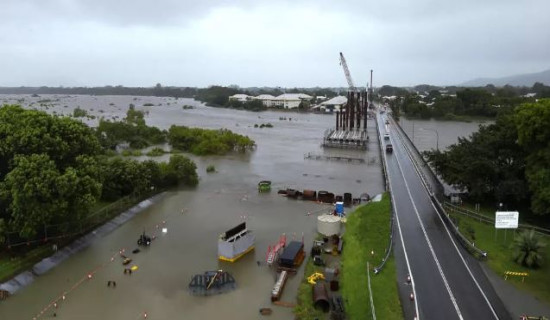- Wednesday, 5 February 2025
Pro-agro Snowfall
As winter blankets the mountains and high hills in a thick layer of snow, it results in icy roads, plummeting temperatures, and the struggles of daily life during the cold months. However, for mountainous regions, snowfall plays an essential role in sustaining both agriculture, water supply and tourism. While the picturesque scenery may seem merely aesthetic, the impact of snowfall on local economies and ecosystems is propitious. Snowfall, when it arrives in the right time and amounts, boosts winter crops and attracts the visitors eager to feast their eyes on the natural wonders.
In the mountain regions, snowfall is not just a seasonal phenomenon but a critical component of the agricultural cycle. Snowmelt in the spring provides a steady and natural source of water for winter crops, especially in areas where rainfall can be unpredictable or insufficient during the colder months. Winter crops such as wheat, barley, oats and certain types of hardy vegetables rely on the slow release of snowmelt that nourishes the soil. The natural blanket also helps to regulate the temperature beneath the surface, preventing frost from damaging tender roots or seeds. Therefore, the snowfall is as important as the sunshine in ensuring a successful crop cycle.
With the winter season reaching its peak, high hills and mountains of the western part of the country are currently experiencing extreme cold, accompanied by snowfall. As per the news report published in this daily on Tuesday, the mountainous districts in Karnali and Sudurpashchim provinces received snowfall from Sunday due to the influence of Westerly winds, which bring moisture from the west. According to the Department of Hydrology and Meteorology (DHM), these winds often result in cloudy skies, light to moderate rains in lower regions and snowfall in higher altitudes. The Westerlies also bring moisture that leads to cooler temperatures in the plains and the formation of mist.
Highlands of Bajura, Darchula and Humla districts have experienced rainfall and snowfall affecting normal life. Thick snow cover has made it difficult for children and the elderly to move outdoors. Students are also finding it challenging to attend schools. Students from the poor families not having sufficient warm clothes are facing problems. Some schools are reported to be attracting students to the school by managing fire to keep them warm. The vehicular movements have also been disrupted. In Simkot of Humla, the mercury has dropped as low as minus five degrees Celsius when snow blanket with thickness of up to a foot covered the ground.
However, farmers are happy after the timely snowfall as it has brought hope among them. It is expected to improve weather conditions and support winter crops like wheat, barley and oats planted in November. Previously, farmers were concerned as seeds sown in October had not germinated yet. Snowfall in mountainous regions is much more than a seasonal inconvenience. It is a lifeline for farmers ensuring the vitality of both local agriculture and the mountain economy. With the right precautions, we can harness the benefits of snowfall. To ensure the safety of people from the dipping cold, the local government should make necessary support to the needy people, including children, the elderly, the sick and those on the margins of the society.

















